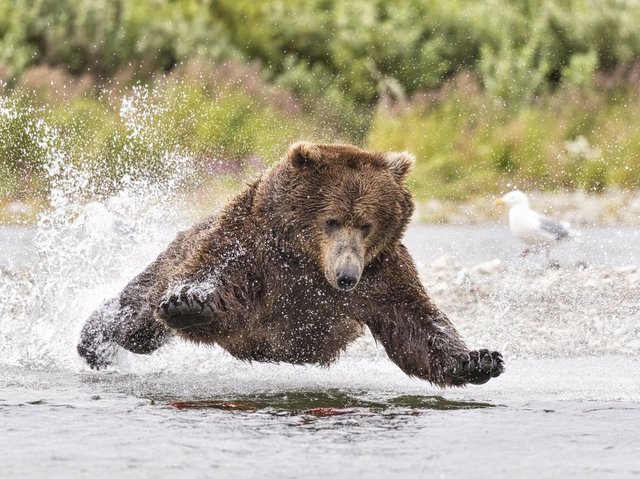The bear grows, and never suffers from diabetes?
When hibernating, grizzlies have an "excess" weight of 200 kg, while remaining healthy. How is this possible ? Here is the explanation.

©
"Why do bears have cholesterol or diabetes?" Asked Mildrey Serin on his Facebook page . A question that probably stems from the fact that grizzly bears become "obese" before they start hibernating, and that polar bears can consume kilos of fat in just a few minutes, and all while staying healthy.
Grizzly bears "cure" of diabetes
Each fall for grizzly bears, the common bear in the northern United States and Canada, the same thing happens: It puts on extra pounds and starts his hibernation, which lasts seven months, with an "excess" of 200 kg ( Twice in it's usual weight) and it is doing very well. If a human were to increase his weight in the same way in such a short time, it would clearly put his health at risk: his risk of developing type 2 diabetes would increase, as would the risk of cardiovascular disease, renal failure.
But, contrary to what one might think, the bear isn't protected from diabetes, researchers at Washington State University have shown in 2014 that grizzly bears become diabetic during hibernation, but they "heal" the disease when they wake up in the spring, to find out, they measured weight, blood glucose, insulin level (blood sugar regulating hormone), and other metabolic parameters in six grizzlies in captivity during October, January and November, of May, that is to say before, during and after their hibernation.
The "healing" power of grizzly bears is found in their cells. In diabetic humans, they lose their ability to respond to insulin, but bear cells remain sensitive to this hormone, due to the activity of a protein, called PTEN, found in adipose tissues (which store fat). A considerable benefit to lose weight because grizzly bears store their fat only in fat cells, not in the liver and muscles as in humans.
Polar Bear protected from cholesterol
Counter-intuitively, American researchers have noticed that the most obese grizzlies are the most sensitive to insulin, so those who develop the least diabetes during their hibernation. "This discovery is in contradiction with the commonly accepted view that obesity leads to diabetes," commented Kevin Corbit, lead author of the study in 2014.
Polar bears can also consume pounds of fat in record time without suffering from excess cholesterol. In 2014, researchers at the University of California at Berkeley analyzed the genome of 79 polar bears and discovered that this benefit comes from mutations on the APOB gene, whose function is to code the main protein of bad cholesterol. Moreover, according to researchers, these genetic mutations would also allow him to transform fat into water within his body. A major asset in the Arctic where access to fresh water is complicated.

Great post, very interesting. Thanks for sharing.
You're welcome.
Also I'm an OCD curator and i would like to nominate this post for our daily compilation. Reply if you accept. This could get you more attention to your blog and maybe some extra votes.
This gem of a post was discovered by the OCD Team!
Reply to this comment if you accept, and are willing to let us share your gem of a post! By accepting this, you have a chance to receive extra rewards and one of your photos in this article may be used in our compilation post!
You can follow @ocd – learn more about the project and see other Gems! We strive for transparency.
yeah thank you.
Killer shots. Superb